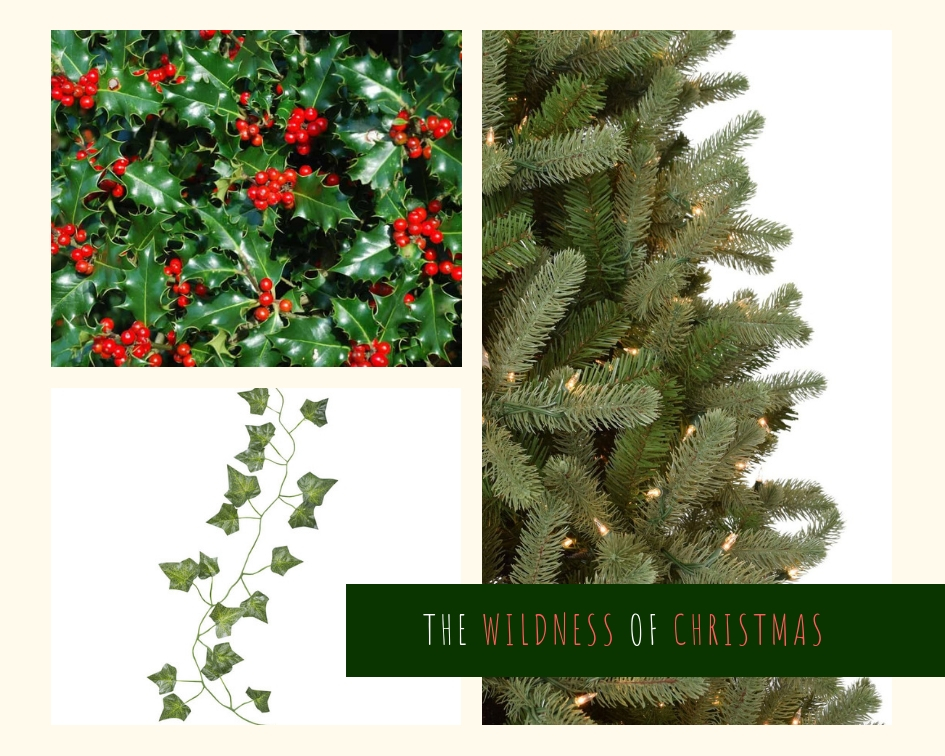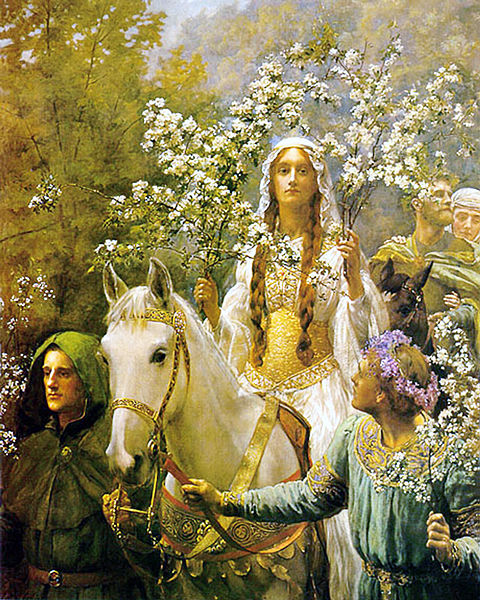Christmas is all around us...

Christmas comes early in our house - a large Douglas fir Christmas tree was installed in our lounge on November 30th ! This is all the more significant this year since I learned about the beneficial effects of phytoncides, the immune system boosting chemicals which conifers exude and which are breathed in by people who spend time near conifers.
Most Christmas trees are either Douglas fir or spruce both of which have edible, aromatic needles so if you have a Christmas tree you potentially have a lot of needles to play with... although unless your tree is organic sadly it has probably been sprayed with pesticides & is therefore inedible.
This year I am also noticing more than ever the Christmas presence (say that out loud slowly...) of plants in seasonal carols. There is a song about holly and ivy and a song just about holly which has a line I just can't get out of my head: 'the first tree in the greenwood it was the holly'. Alongside the line in 'Holly and the ivy':
'Of all the trees that are in the wood, the holly bears the crown'.
It seems to me that there is a trail to be followed into English folk custom as to what this alludes to - why is holly being hailed in this way? Both songs take the various parts and growth stages of holly and through them describe various parts of the Christian narrative. Similarly, the old German carol ‘Oh Tannenbaum’ takes the evergreen character of the Christmas tree to symbolise various characteristics of the divine such as constancy:
'How lovely are your needles. You are green not only in the summertime - No, also in the winter when it snows'.
And of course, the holly and the ivy are both also evergreen, so that the midwinter symbolism supplied by all three speaks of life persisting strongly in the time of the lowest ebb of the earth's vitality.
All this, some might say is just synchretism, the assimilation of pagan culture around earth mysteries and symbolism into gospel narratives. However, the biblical narratives are by no means antithetical to creation-based symbolism. The gospels, the psalms, Old Testament prophets and even the book of Revelation are replete with earth-based parables, themes and symbolism.
The thing for me is not the particular spiritual tradition from which the use of such symbols derive, but rather the fact that all culture has roots in landscapes and ecology. And many carols also have roots in folk - as in, ordinary folk-music: the music of the rural poor, whose lives were enmeshed in the cycles and seasons of the land and for whom, as recently as the early19th century, most of what they used for food, medicine, clothes, shelter and utensils was derived from materials obtained from their immediate surroundings.
Above I referred to Christmas carols: only yesterday I discovered there are such things as Mayday carols! I bought an old cassette of traditional folk tunes which has one, all about a tradition around the gathering of May or hawthorn blossom. There is Christian symbolism in both the carol and the traditional practice to which it refers. It is likely that predating this were pre-Christian symbols relating to the same or similar practice. But I am sure both derive from the practical importance of hawthorn - its usefulness for food and beverages, for medicine, wood and as a hedging plant.

Queen Guinevre's Maying, 1900, by John Collier
Symbols originate from and then woven back into the practices of everyday life so that simple activities become rituals and active meditations on the enduring truths, values and meanings of our lives. This is the life-giving work of culture, which through installing these truths, values and meanings in both the everyday and in annual festivities, enables the fostering of bonds between people in communities and between communities and landscapes.
In the face of the prevalent culture of consumption, it’s up to us to rediscover the cultural treasures hidden amongst the gift wrap and the tinsel...
Merry Christmas!
